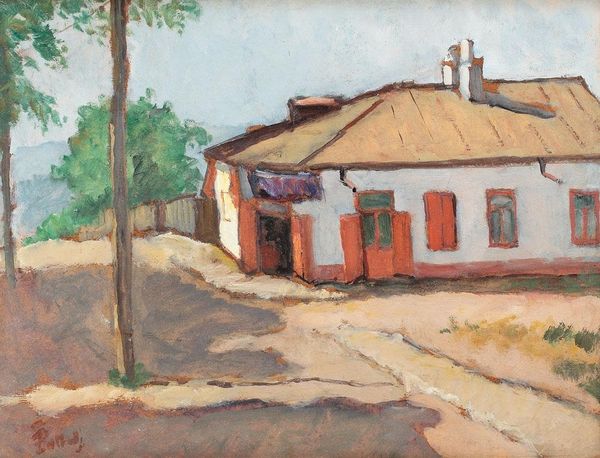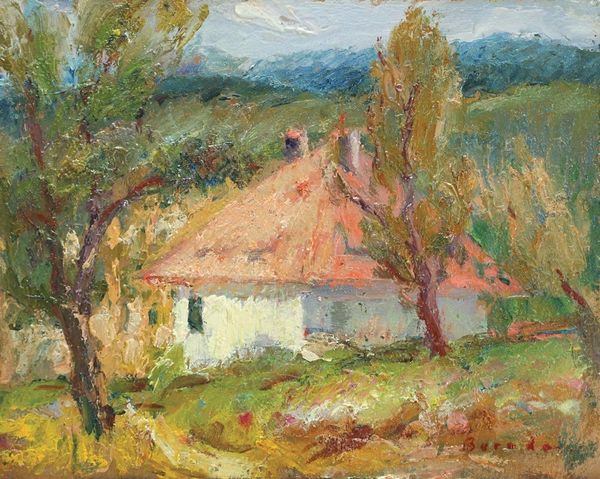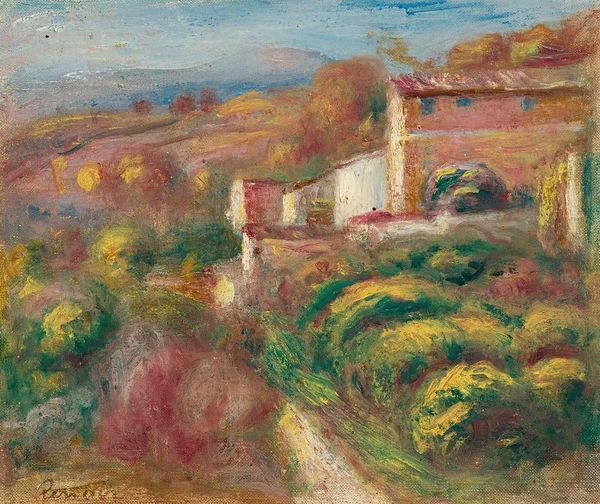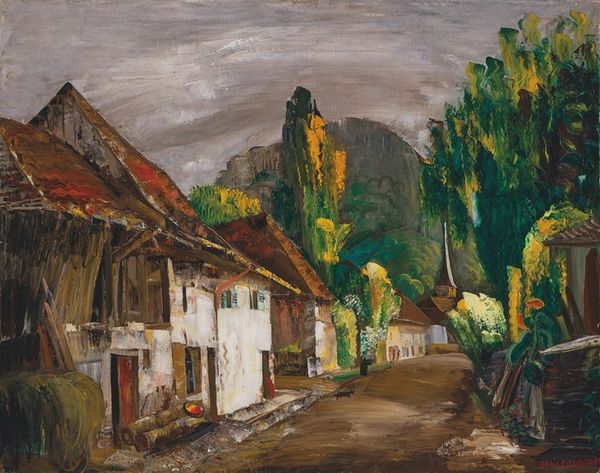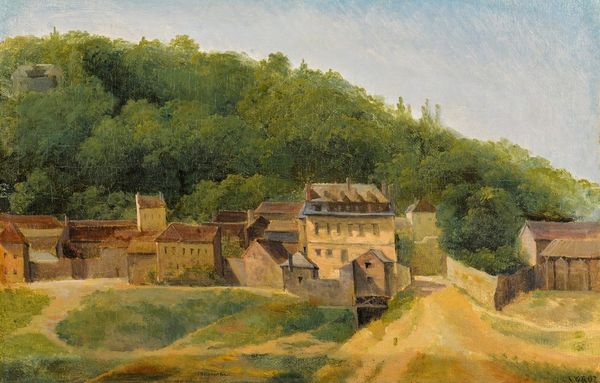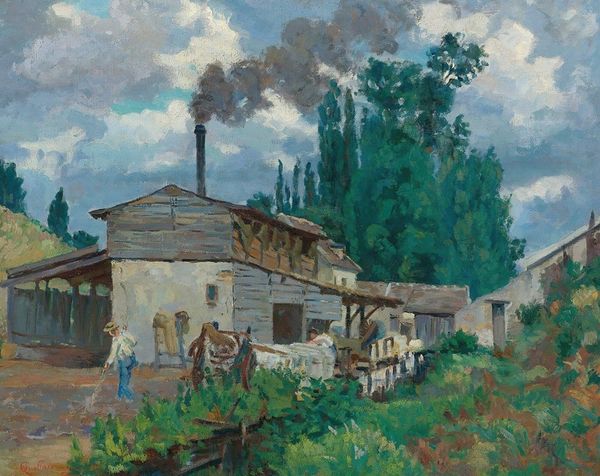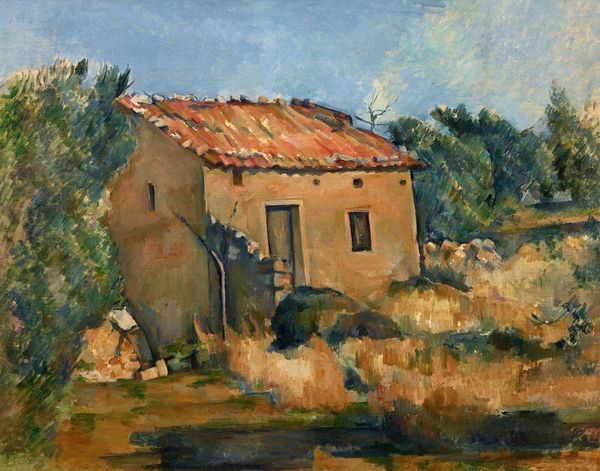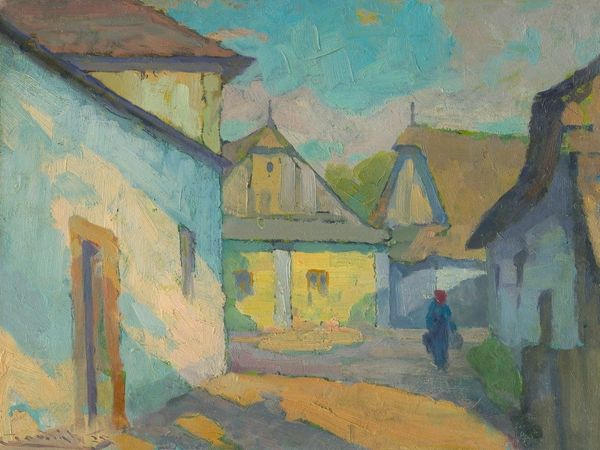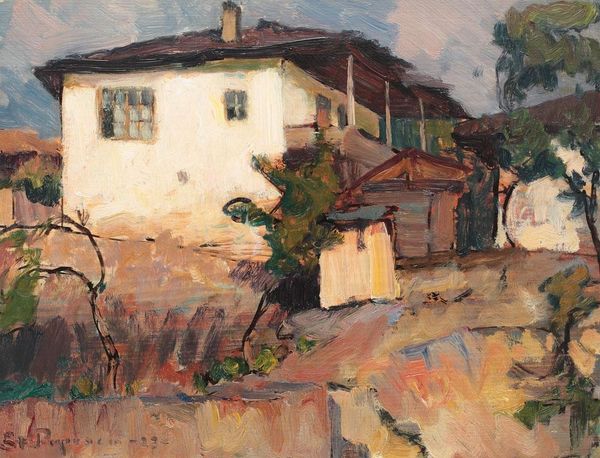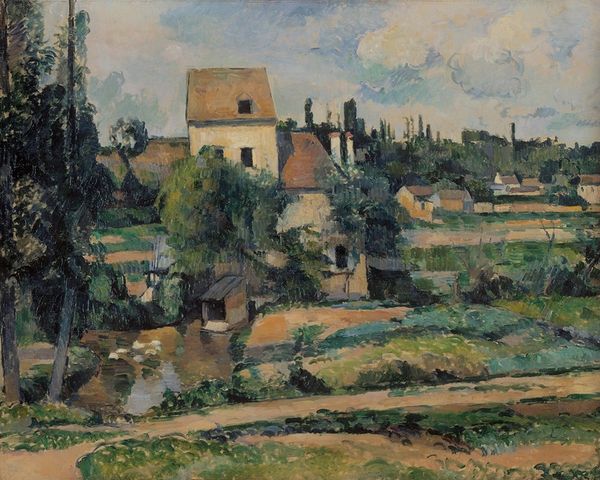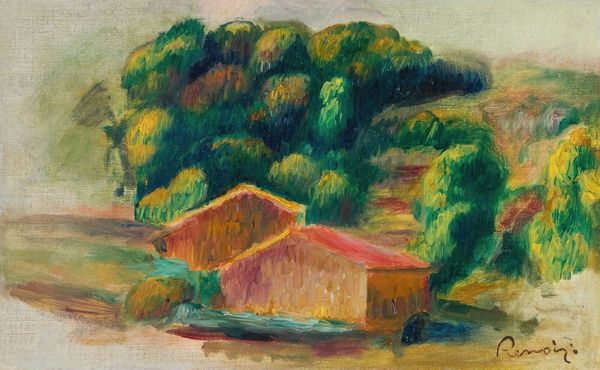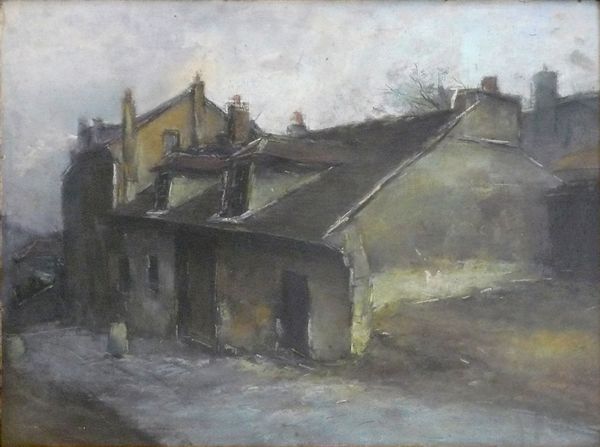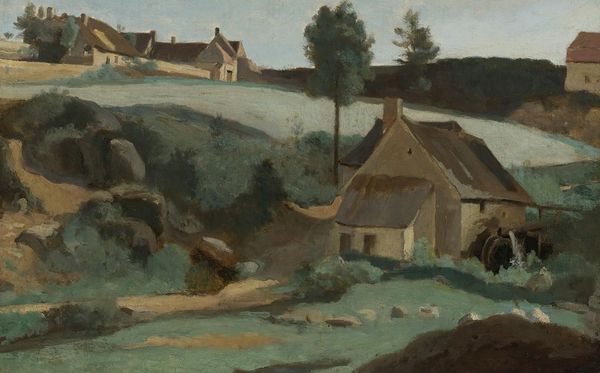
painting, oil-paint, impasto
#
painting
#
oil-paint
#
landscape
#
oil painting
#
impasto
#
expressionism
#
modernism
Copyright: Public Domain: Artvee
Curator: Tadeusz Makowski's "Landscape from Le Pouldu," an oil painting completed around 1917. The canvas pulses with a muted energy that draws the eye. What are your initial impressions? Editor: It's intriguing. It strikes me as almost claustrophobic despite being a landscape. The buildings feel imposing, crowding the frame, and the light is somehow oppressive rather than illuminating. I can't help but think that maybe its historical moment – painted during the upheavals of World War One – influenced this rather unsettling atmosphere. Curator: It's fascinating that you pick up on that tension. Makowski did spend time in Brittany during that period, so contextualizing it historically is fruitful. Brittany was also the center of modern artistic experimentation with many artists who would come and create new works with expressionistic and symbolic style. I believe we could attribute its aesthetic characteristics as a sign of the Modernism style. Editor: Indeed. And what appears like rustic, idyllic scenes for other painters, become laden with emotion and psychological resonance under Makowski's gaze. There’s a socio-political dimension here, considering the rapid changes occurring at the time. Looking at the actual brushwork itself. It almost appears violent in certain spots, and he does leave parts of the raw linen canvas showing, disrupting conventional pictorial illusions. Curator: A valid observation. These aspects surely emphasize its nature as an aesthetic object and suggest his intent to liberate painting from academic traditions. But perhaps this focus is less about outright rebellion and more a symptom of the shifting perceptions of what art’s public function could be. How to represent, what to represent, when everything has seemingly changed. Editor: Yes, but for me, that’s also a kind of defiance in itself, though. If you abandon the conventions, there's an inherent sociopolitical and aesthetic claim about what needs change in society. It is subtle, but powerful. It is a painting in between many styles. Modern in a post impressionistic aesthetic. The thick, visible brush strokes and emphasis on color express emotion over realistic portrayal, with tones all speaking together as if expressing a silent struggle. Curator: Your analysis makes me reconsider its seemingly quaint facade! Thinking through the political currents makes me view it from an alternative context. Editor: Absolutely! It shows art does more than decorate the background. When explored deeply, we find its expression of humanity and all of its struggles.
Comments
No comments
Be the first to comment and join the conversation on the ultimate creative platform.
